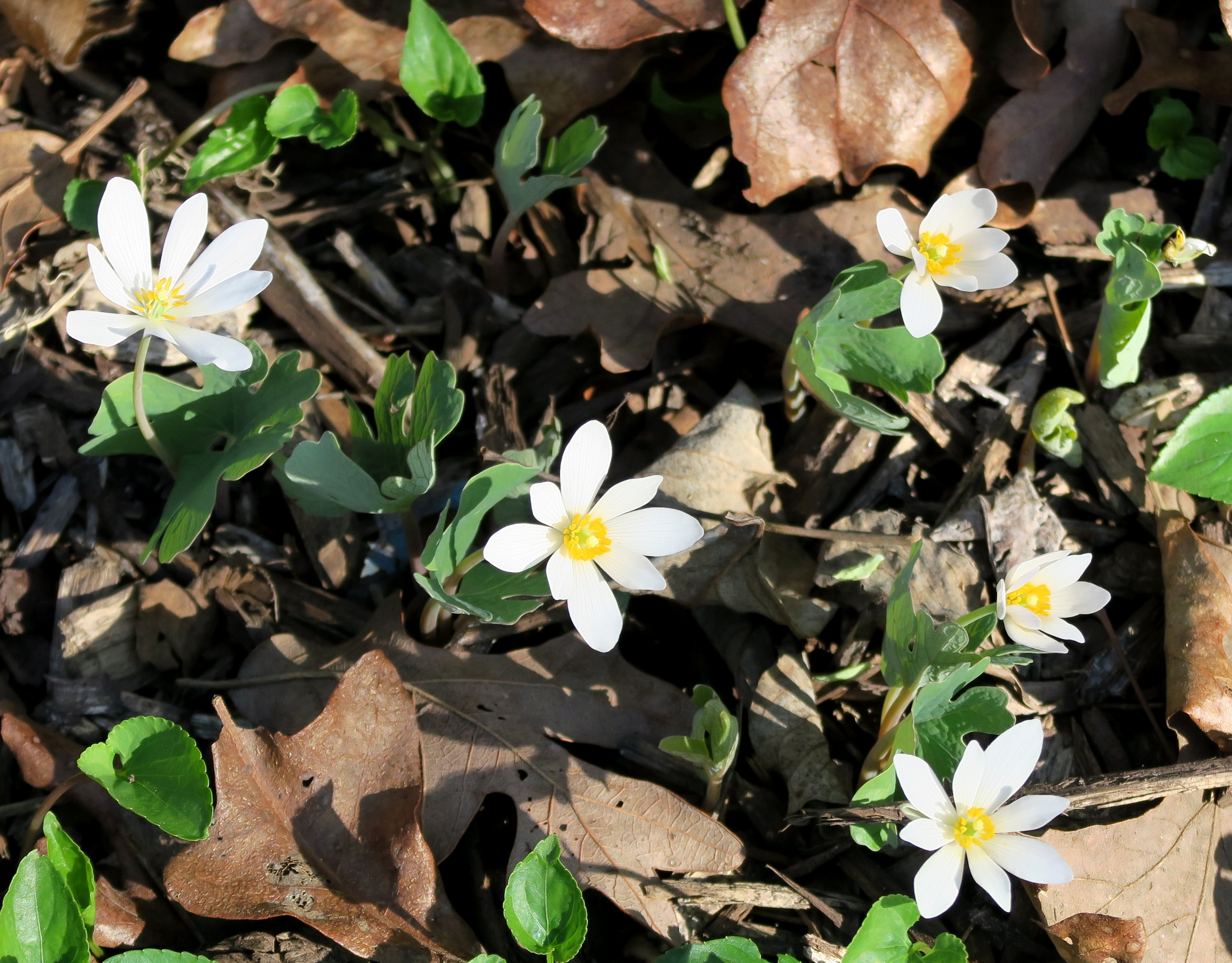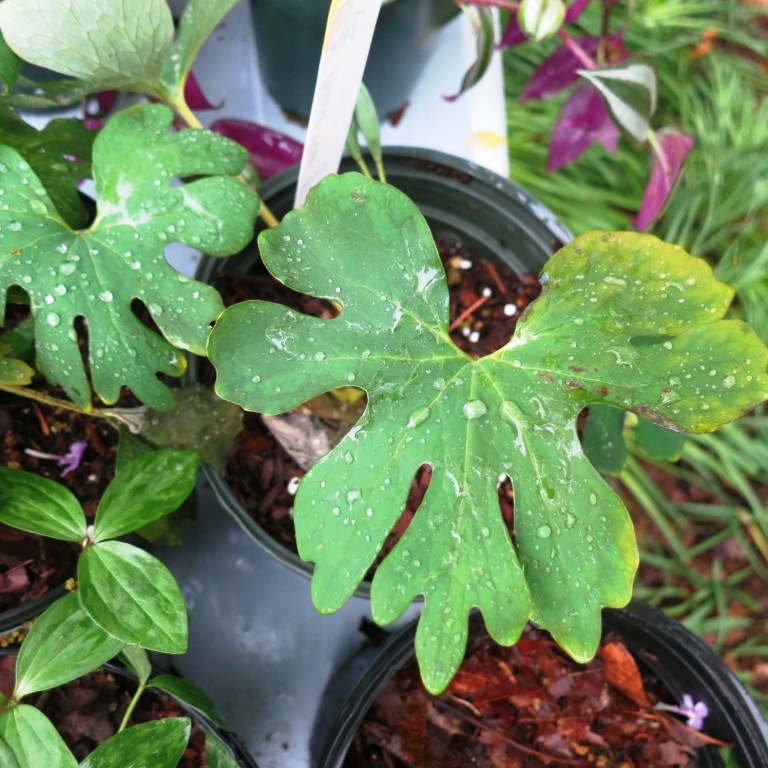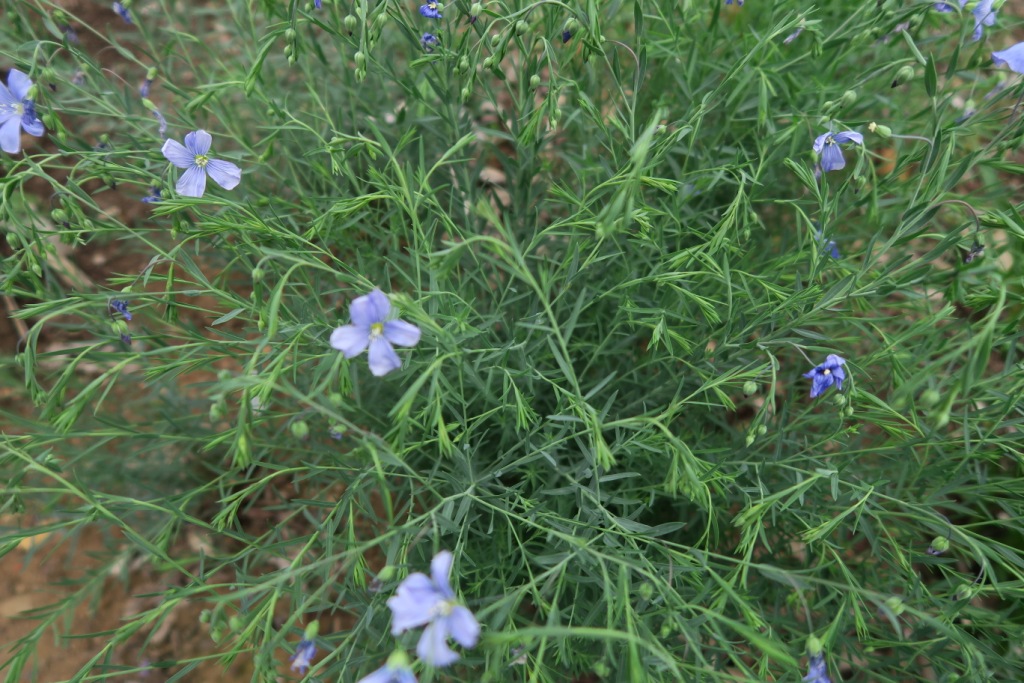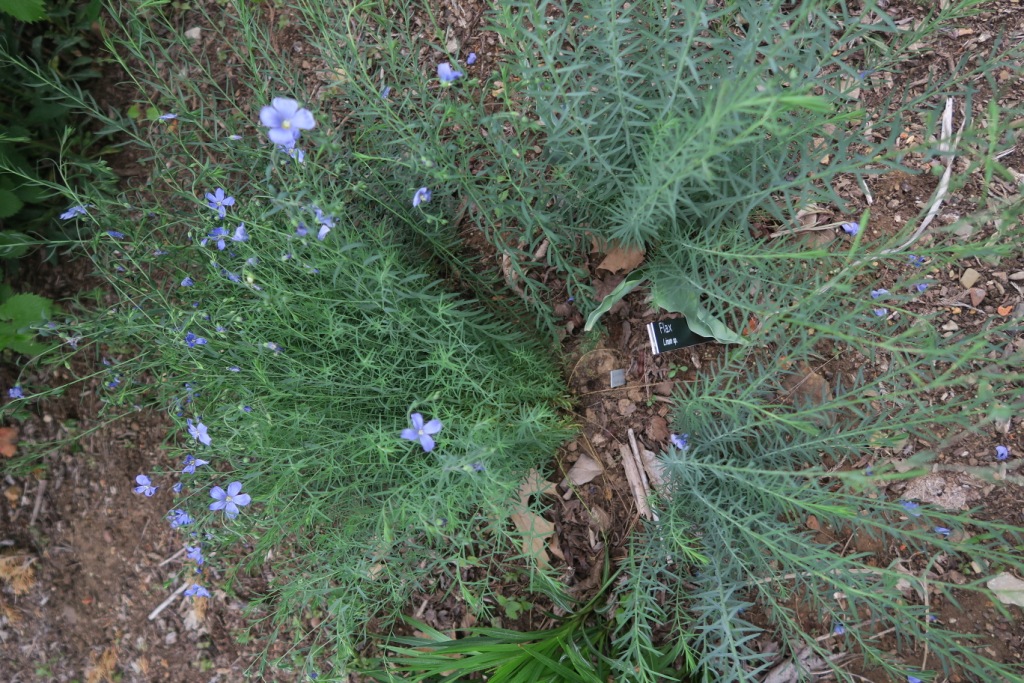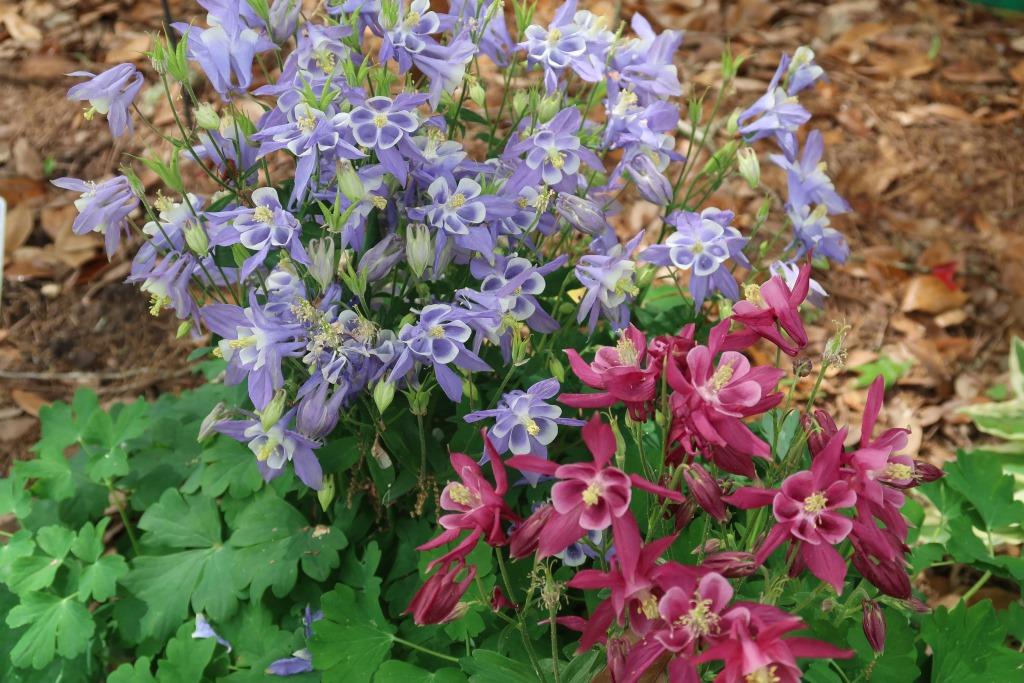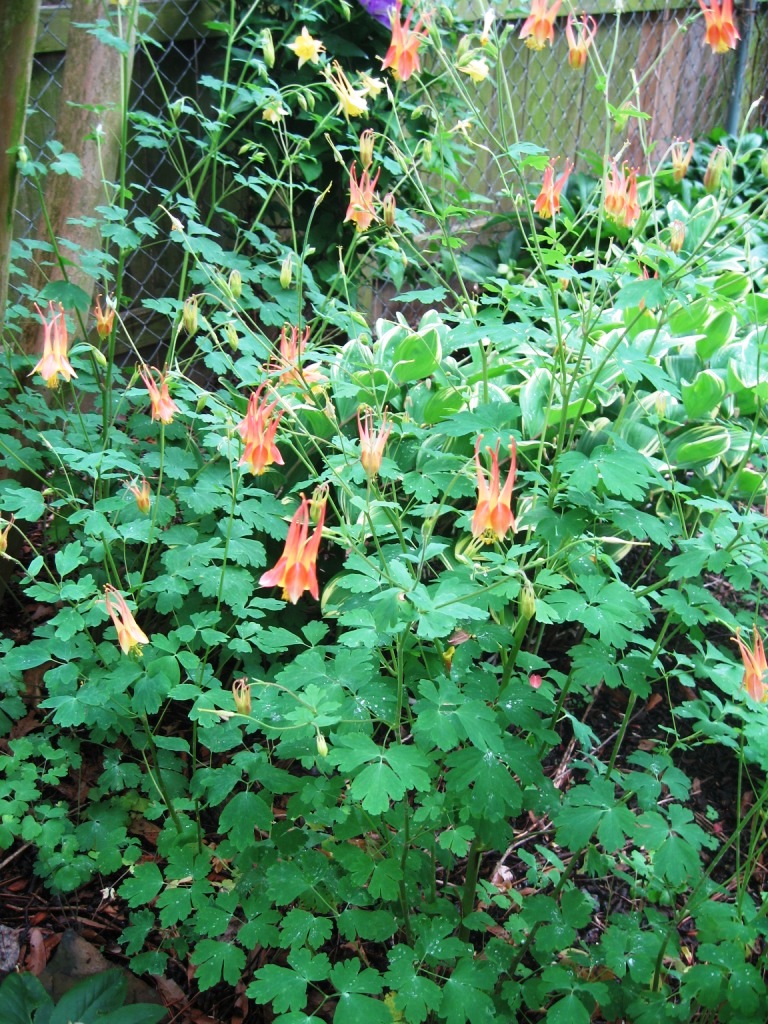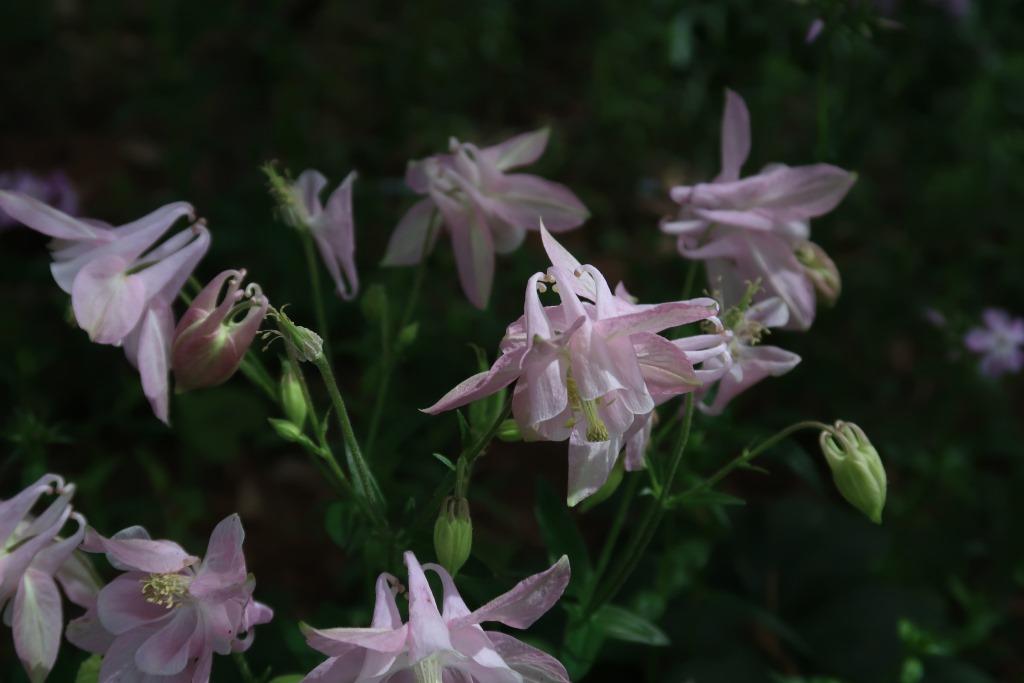Bloodroot – Sanguinaria canadensis is one of the earliest blooming wildflowers in the woodland garden. This perennial native is in the poppy family, and gets its common name bloodroot, because the root, when cut exudes a red sap which was used as a red dye. Other common names include red puccoon and bloodwort. The plant grows in clumps and is a spring ephemeral—producing leaves and flowers for about a month, then going dormant for the rest of the year.
Best grown in light to heavy shade. Know where you plant it so you don’t disturb it when planting other things later in the season.
Flax – Linum species
is a perennial plant which can be used as an ornamental as well as a plant for food and fiber. Thin, arching stems bear thin leaves and cornflower blue flowers.
It blooms in the spring, but can repeat sporadically during the season. Does best in full sun in well drained soils.
Columbine – Aquilegia species.
While the native columbine – Aquilegia canadensis produces red and yellow blooms,
there are an abundance of color choices in the hybrid columbines, all of which are early, cool season perennials in the ranunculus or buttercup family. The foliage has fern-like leaves and the flowers are showy blooms with spur protrusions at the bottom.
They will take more sunlight when it is cool, but need shade as temperatures increase, so best planted under deciduous trees. They can be short-lived perennials but then can reseed to give you new plants for may years.

